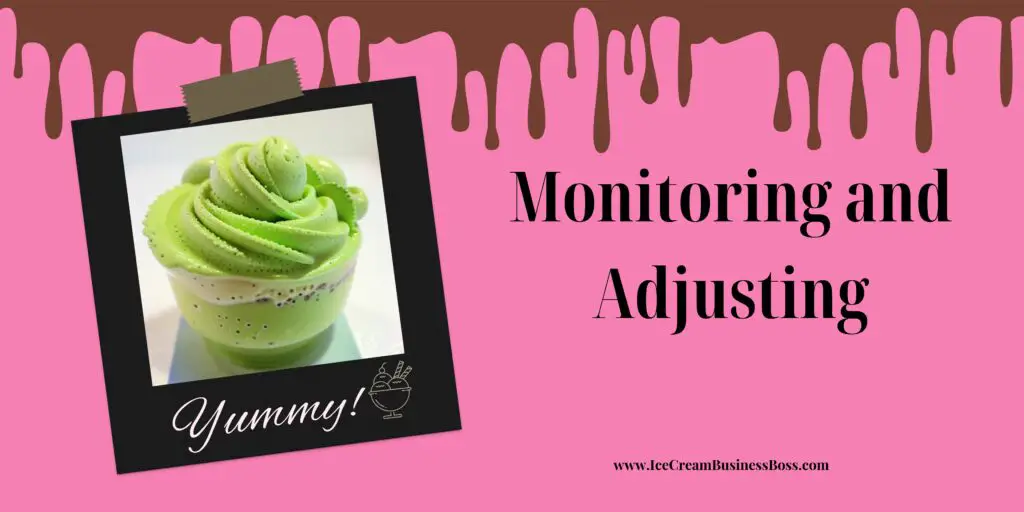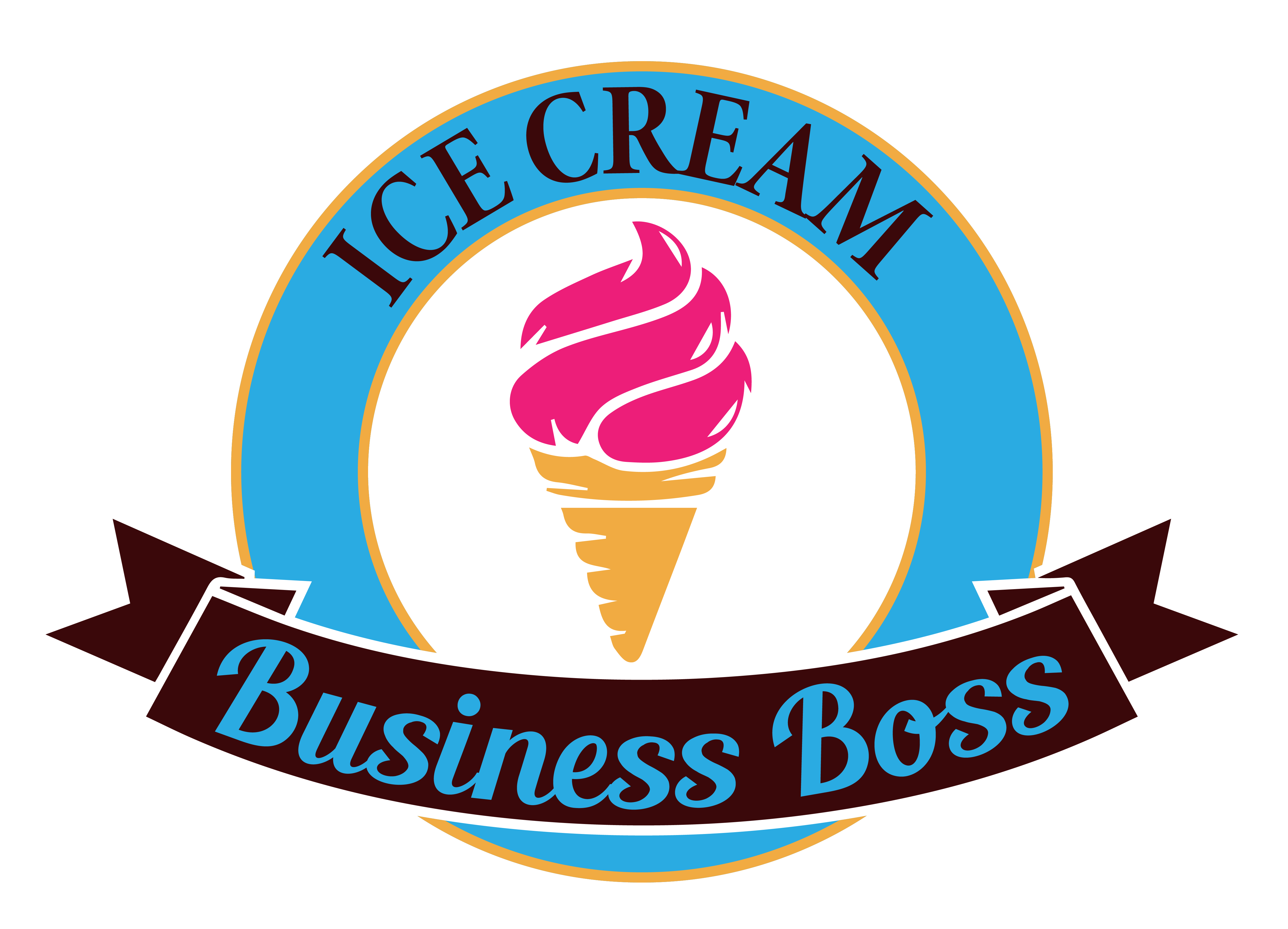Ice cream, with its delectable variety of flavors and creamy textures, is a universal favorite that delights people of all ages. Ice cream parlors have a distinct place in the culinary world, serving everything from conventional vanilla cones to avant-garde artisanal creations. Yet, hidden behind happy customers’ grins and the delicious aroma of waffle cones is a vital business factor that often goes unnoticed: profit margins.
To optimize your financial strategy, you should start with understanding your typical profit margin, which can vary widely but is often in the range of 10% to 20% due to the cost of ingredients, labor, and overhead expenses.
In this article, we embark on the world of ice cream parlors, where the pursuit of the perfect scoop collides with the financial acumen required to run a thriving business. So, as we delve into the sweet and frigid terrain of ice cream parlor profit margins, prepare to learn the secrets behind these frozen delicacies and the business acumen that keeps them scooping.
The Foundation: What is Profit Margin?
Any business, even ice cream shops, needs to know their profit margin because it shows how well they are turning a profit from their activities. The first step in calculating profit margin is to ascertain your net profit, which is the sum of money left over after paying all costs, such as overhead, ingredient costs, and labor. The total revenue, which is the whole amount of money your ice cream shop makes from sales, is then calculated by dividing this net profit by it.
The final figure, which is typically stated as a percentage, shows what portion of your income is converted into profit. Simply said, it’s a gauge of how effectively your company turns revenues into profits. A bigger profit margin shows that your ice cream shop is effectively controlling costs and making more money for every dollar of revenue.
For a variety of reasons, understanding profit margin is essential. You may measure the effectiveness of pricing schemes, gauge the overall financial health of your company, and use the information to assist you in deciding how to reduce costs. The continuous monitoring of profit margins is particularly crucial for ice cream parlors, which frequently deal with seasonal demand variations and perishable inventory, to maintain sustainability and growth.
Profit Margins Across Industries
Profit margins are a key indicator of a company’s efficiency and financial health, and they can vary greatly between industries. The unique traits and dynamics of each industry have a major impact on the difference in profit margins. Ice cream shops often have profit margins that lie within a relatively small range, typically between 10% and 20%. This range is affected by several ice cream industry-specific factors.
The cost structure is one of the key elements influencing the profit margin range of ice cream parlors. Despite appearing straightforward, making ice cream includes several expenses, including ingredients, labor, rent, upkeep of the equipment, and utilities. These costs add up and might reduce revenues, especially for smaller businesses that might not experience economies of scale.
Ice cream shop profit margins are significantly influenced by seasonality. While sales may drop dramatically over the winter, many parlors have their highest demand during the hot months. It can be difficult to manage inventories and workers during these swings, which has an impact on profitability.
The ice cream industry’s profit margins are also impacted by competition. Competition can lower prices in locations with many ice cream shops, which may affect profit margins. On the other hand, certain ice cream parlors may be able to charge higher prices and generate better margins by differentiating their products through distinctive flavors, premium ingredients, or creative marketing techniques.
For ice cream shops to achieve profit margins between 10% and 20%, operational effectiveness and cost management are crucial. Profitability can be increased by efficient cost management, portion control, and customer involvement.
Check out this article to learn more about the profit margin of an ice cream van business.
Factors Impacting Profit Margins in Ice Cream Parlors

Cost of Ingredients
An important element influencing profit margins in ice cream shops is the price of ingredients. These businesses place a strong priority on using premium ingredients to create delicious frozen desserts, but this dedication to quality can be costly. The price of premium ingredients is frequently greater, which has an immediate impact on the cost of goods sold (COGS). The profit margins may get smaller as the COGS rises.
However, the operators of ice cream shops use a variety of tactics to create a delicate balance. They carefully select ingredients, looking for reputable vendors that can provide both high quality and reasonable prices. Efficient ingredient use reduces waste and cost overruns. This is made possible by proper inventory management. The secret to making outstanding ice cream while maintaining profit margins is to keep ingredient costs under control.
Labor Costs
Running an ice cream shop requires a variety of workers, such as talented ice cream craftsmen, jovial scoopers, effective cashiers, and support staff. A significant component of the total expenses is labor costs. appropriate labor cost management depends on maintaining an ideal personnel level and appropriate scheduling.
Owners of ice cream parlors frequently adopt innovative tactics, such as cross-training staff to multitask, to guarantee labor costs are in line with sales, maintaining profit margins without sacrificing service quality.
Overhead Expenses
These expenses cover a wide range of charges essential to running an ice cream shop, such as rent for a prime site, utilities to run the machinery, advertising to draw consumers, and insurance to protect the company. Securing a premium location can result in higher rent costs, but it can also mean more customers and money.
Ice cream shop owners typically look for ways to cut costs to maximize profit margins. This can entail purchasing energy-efficient equipment to reduce utility costs, putting focused marketing tactics into place to increase profits, and assessing insurance choices to make sure full coverage is provided without paying exorbitant prices.
Seasonal Variation
The ice cream industry suffers pronounced seasonal variation, with summer being the peak season for demand and winter seeing a fall in sales. Profit margins may be considerably impacted by this variation in revenue. Ice cream shop owners must practice careful financial planning to navigate these seasonal swings. They might need to increase inventory and employee numbers at busy times to keep up with increased demand.
On the other hand, during the off-season, cost structures could need to be changed to account for lower sales without racking up too many costs. In the world of ice cream, flexibility is essential to ensure that profit margins are stable throughout the changing seasons, combined with efficient cost control strategies.
Explore more about the ice cream truck investment business by visiting our article here.
Strategies to Optimize Profit Margins

After identifying the variables that can affect ice cream shop profit margins, let’s explore some methods for increasing these margins:
Pricing Strategies
Setting the appropriate pricing plan is essential to preserving your ice cream shop’s healthy profit margins. Finding the right balance between charging reasonable rates and making sure your goods are not being devalued is crucial.
To find the pricing sweet spot that enables you to recoup your costs while retaining client appeal, conduct in-depth market research. This can entail examining competitors’ pricing plans and figuring out how eager customers are to pay.
Efficient Inventory Management
For ice cream shops, effective inventory management is essential for cost reduction and profit margin improvement. Monitoring your ingredient stock carefully helps you reduce waste and avoid overstocking, which lowers unnecessary costs.
Implementing inventory management software can transform your business by improving your ability to precisely track ingredient usage and estimate demand. When you have accurate information at your disposal, you may order ingredients knowing exactly what you need and not ordering too much.
Streamlined Operations
Your ice cream shop can cut labor costs and increase overall efficiency by streamlining its procedures. Employees who receive cross-training to manage a variety of duties are more productive and flexible. Customers can wait much less for orders to be prepared and served thanks to efficient processes, which can also enhance customer satisfaction and perhaps even sales.
Invest in tools and processes that make work easier, like effective ice cream makers and point-of-sale (POS) systems. You may save labor costs and give your customers a flawless experience by streamlining your process and operations.
Cost Reduction Strategies
A key strategy for keeping your ice cream shop’s profit margins strong is to routinely review and optimize overhead costs. Your bottom line may be immediately affected by negotiating with suppliers for better prices on ingredients and other supplies. To cut down on electricity costs, think about purchasing energy-efficient equipment.
To get the most out of your marketing budget, look into locally-based partnerships and social media promotions. Continue to evaluate the necessity of each area of spending and search for ways to reduce wasteful spending. You can make sure that your ice cream shop runs well and continues to be gainful by continuously looking for cost-cutting alternatives.
Product Diversification
To increase overall sales and reduce operational expenses in your ice cream shop, diversifying your product line might be a technique. A selection of ice cream toppings, coffee, baked foods, and other complementing items might be added. The variety for your clients is increased by this diversity, which also raises the average transaction value.
It may enable you to reach additional customer demographics, potentially growing your clientele. Seasonal specials or transient promotions can also create buzz and draw in new customers. You may increase your profitability and maintain constant sales throughout the year by carefully diversifying your product offerings.
Off-Season Planning
Maintaining sales and profit margins in your ice cream shop requires careful planning for the off-season. Investigate other sources of revenue during the lean months, such as providing catering for gatherings and celebrations. Even in unfavorable weather, offering seasonal specials or discounts might help draw customers.
Create excitement and lure visitors to your business year-round by hosting unique events or themed nights. You may lessen the effects of seasonal changes and guarantee a more consistent revenue stream throughout the year by making plans for the off-season and modifying your offerings and marketing strategy accordingly.
Customer Loyalty Programs
Customer loyalty programs can be used to encourage repeat business and increase your ice cream shop’s profit margins. Customers who are loyal to you are more likely to buy from you again, which raises their lifetime value. Various types of loyalty programs exist, including punch cards that grant free merchandise after a set amount of transactions, member-only discounts, and exclusive promotions for milestone occasions like birthdays and anniversaries.
These initiatives provide your clients with a sense of appreciation and belonging, increasing the likelihood that they will pick your salon over rivals. Consistent sales, lower client acquisition costs, and higher profit margins for your ice cream shop are all benefits of developing a loyal customer base.
Monitoring and Adjusting

A crucial step in developing a thorough financial strategy for your ice cream shop is understanding your usual profit margin. You must adopt a dynamic strategy that includes ongoing monitoring, adaption, and wise decision-making if you want to fully maximize your financial performance and guarantee long-term prosperity.
Regularly reviewing your profit and loss accounts (P&L) is a crucial part of keeping your finances in good shape. These statements include a thorough explanation of your earnings, outgoing costs, and—most importantly—net profit. You may learn a lot about the financial growth of your ice cream shop by routinely reviewing your P&L statements—monthly or quarterly, for example.
It’s important to spot trends and patterns in these assertions. Are there any specific months or times of the year when profit margins tend to be higher or lower? Are there any sectors of spending that appear to be growing too quickly?
You can identify your areas of improvement with the use of such observations. For instance, if your profit margins are usually lower during the off-season, you might look into ways to increase sales during such times, like running special deals or adding seasonal menu items.
Another critical component of financial monitoring is keeping track of key performance indicators (KPIs). KPIs offer particular measurements that show the state of your company. These could include things like average transaction prices, customer retention rates, or inventory turnover rates.
You may quickly identify problem areas and take proactive measures to address them by regularly monitoring KPIs. A diminishing client retention rate, for instance, can be a warning that your loyalty program needs to be adjusted, whilst a rising average transaction value might be a sign that upselling efforts are working.
The key to financial growth in the ever-changing ice cream parlor sector is adaptation. Be prepared to make changes if you discover patterns or discrepancies in your financial data. This can entail changing price tactics, improving inventory control, or reassessing marketing initiatives. Flexibility is essential, especially in a sector of the economy where seasonality and changeable consumer preferences are prevalent.
Keeping up with market developments and trends will help you stay competitive. Investigate novel tastes, innovations, or marketing strategies that meet consumer wants and industry trends. Your bottom line will benefit from investing in employee training and development since it will increase productivity and customer satisfaction.
Frequently Asked Questions
What is an ice cream parlor’s average profit margin, and how does it compare to other food businesses?
According to the report, the average profit margin for an ice cream parlor is between 10% and 20%. This margin varies depending on factors such as location, price strategy, and cost management. Ice cream parlors may have lower profit margins than other food enterprises due to the seasonal nature of the product and the requirement for premium ingredients.
How can I cut ingredient expenses while preserving ice cream quality?
Consider bulk purchasing from trusted vendors, negotiating good discounts, and choosing local and seasonal items whenever possible to lower ingredient costs without sacrificing quality. Experimenting with flavor profiles and managing portion sizes will help you make the most of your ingredients while giving unique items to your clients.
What are some effective marketing methods for ice cream parlors to attract customers during the off-season?
During the off-season, you can promote seasonal or holiday-themed ice cream flavors, conduct special events or tastings, collaborate with local businesses, and provide catering services for parties and gatherings. Using social media and email marketing to keep customers involved and informed about your off-season services can also help you keep revenue up.
The information provided by IceCreamBusinessBoss.com (“The Site”) is for general informational purposes only. All information on the Site is provided in good faith, however, we make no representation or warranty of any kind, express or implied, regarding the accuracy, adequacy, validity, reliability, availability, or completeness of any information on the Site. Under no circumstance shall we have any liability to you for any loss or damage of any kind incurred as a result of the use of the Site or Reliance on any information provided on the Site. Your use of the Site and your reliance on any information on the Site is solely at your own risk. This blog post is for educational purposes only and does not constitute legal advice. Please consult a legal expert to address your specific needs. Terms and Conditions.

Hi! I am Shawn and I am a happy individual who happens to be an entrepreneur. I have owned several types of businesses in my life from a coffee shop to an import and export business to an online review business plus a few more and now I create online ice cream/gelato business resources for those interested in starting new ventures. It’s demanding work but I love it. I do it for those passionate about their business and their goals. That’s why when I meet a ice cream/gelato business owner, I see myself. I know how hard the struggle is to retain clients, find good employees and keep the business growing all while trying to stay competitive.
That’s why I created Ice Cream Business Boss: I want to help ice cream and gelato business owners like you build a thriving business that brings you endless joy and supports your ideal lifestyle.

